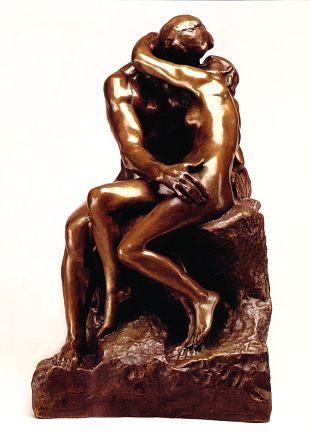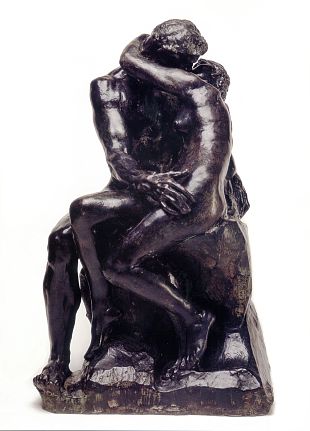H. de Roos - What is an original Rodin? |
||
|
The widely quoted example of the contract Rodin made with the Barbedienne foundry in 1898 illustrates the situation described by Laurent. Through this contract, this foundry obtained the right from Rodin to produce casts of Le Baiser and Eternal Spring for a 20 year period. Between 1898 and 1918, the Barbedienne foundry alone produced 319 bronze casts of The Kiss, in four different sizes. [De Caso, p. 30; Elsen, p. 289]. Although we can speak of a commercial mass edition, these are still sought after casts, the foundry mark of Barbedienne being an important indication that the cast was produced before Rodin´s death in November 1917. The rarity of this edition is not established by limiting and numbering the examples from the beginning, but by the fact all examples are lifetime casts. We may assume Rodin did not supervise the casting and finishing of every single example. According to Tancock, they were not as refined as examples from smaller editions [Tancock, p. 34]. Still, the quality standard of these bronzes must have been sufficient in order not to damage Rodin´s artistic reputation. The Museo Soumaya in Mexico, for example, is quite proud to display a Barbedienne Kiss along with a Alexis Rudier version.
|
||
|
|
|
|
|
Now if we assume that all these 319 Barbedienne casts of The Kiss, produced during Rodin´s lifetime, were accepted by Rodin as "fit for sale", would it then make sense to say that the first twelve copies of a certain size should be called "originals" and all the copies be called "reproductions"? Obviously, this distinction is not logical, but this is exactly what French law today demands for bronzes cast after 1981. While the mass character of the Barbedienne production suggests Rodin´s supervision of the execution of single examples was not very essential with regard to these series, the concept of an "original edition" as proposed by Chatelain seems not to fit these works either. Still, the French legal regulations enforce this modern concept as binding standard for the art industry, for reasons that have nothing do with the active participation, consent or intentions of the artist and everything with the determination of market and tax value.
|
||

